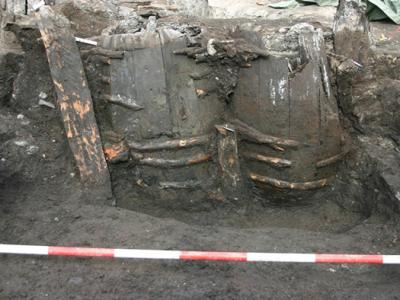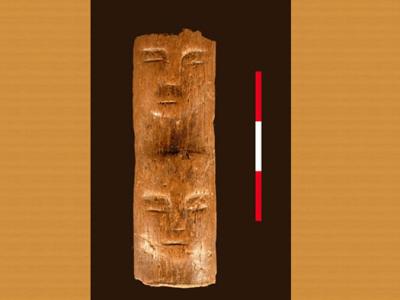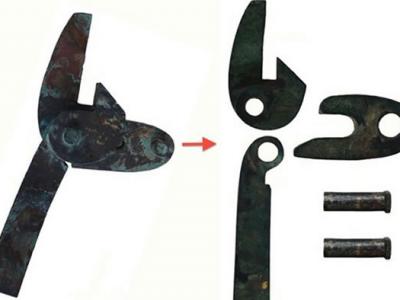Secrets of the Viking Sun-Compass -- After Dark
This wooden fragment discovered in Uunartoq, Greenland, in 1948 has long been thought to be a sun-compass used to determine direction. Could crystals have been applied to make it work after dark?
Viking sailors may have been able to navigate after sunset, despite having no magnetic compasses and relying on sun compasses, says a team of researchers from Hungary and Sweden.
The trick may have been to combine the power of a sun-compass, which is a sort of modified sundial, with that of sunstones to create what they are calling a "twilight board."
"The recently identified calcite crystal found between the navigational tools of 16th-century European ship wreck hints that they could play some role in marine navigation" reports Balázs Bernáth and his colleagues in the Proceedings of the Royal Society A.
To test out if such twilight boards might have existed, the team examined a fragment of an 11th-century dial found in Uunartoq, Greenland, and attempted to extrapolate its features into something that would allow Viking navigators to detect the position of the sun from the twilight glow on the horizon passing through two sunstones.
If the Uunartoq dial is a fragment of a twilight board, the notches in the upper part would indicate true north, instead of a few degrees off, as has been interpreted by others. Lines scratched into the dial fit the path of a low shadow on March 10 and 31, which straddle the equinox. The dial would be used along with two calcite "sunstones" that would find the position of the sun below the twilight horizon.
Image adapted from Bernáth, et al., PRSA
If the difficult technique was employed, it could have allowed navigation well after sunset, since the twilight glow can last all night long at high latitudes in summer. Sunstones are recorded in Viking sagas as being employed to navigate on cloudy days, although what the stones were and how they worked remains lost knowledge.
The first step in regaining that knowledge was taken a few years ago by physicist Guy Ropars of the University of Rennes in France. Ropars and his team experimented with a potential sunstone that was recovered from a British ship which sunk in 1592. They applied partially polarized laser light on the calcite crystal -- similar to the kind of light that would make it through clouds (direct, unfiltered sunlight is not polarized).
By turning the crystal they found that a single angle where the crystal splits the light and transmits both unpolarized and polarized light beams at equal strength. This angle of equal brightness of the two beams of light in the crystal could be used by navigators to then determine the angle of the sun in the sky -- without actually being able to see the sun.
The twilight board would have used the same approach, argues Bernáth, but instead of being used during the day to navigate under clouds, it would use the light in the sky after sunset, along with a specially marked dial, perhaps one like that found in Uunartoq.
"Developing a twilight board is surely not beyond the capabilities of sea-faring people," Bernáth opined. "Sunstones are mentioned in written sources and they could be used during civil twilight, although it is not trivial how one can accurately estimate the position of the sun with them."
Ropars, for his part, is somewhat doubtful that the twilight boards existed.
"(Bernáth and his team) propose to use simultaneously two calcite sunstones in two different directions for determining the Sun position, inducing inevitably a loss of accuracy," Ropars told Discovery News. "Moreover this method seems to be difficult to be applied by Vikings."
The bottom line, according to Bernáth, is that there are just not enough Viking navigational artifacts to prove the case. Small navigational tools would likely not preserve well, but he holds out hope that something important might exist, unrecognized, in some modern museum collections.(Mar 25, 2014 08:00 PM ET // by Larry O'Hanlon)













